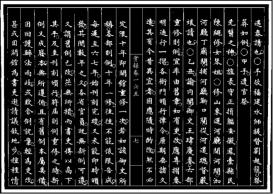The “Models and Regulations” (則例) extant today that relate to the Qing palace demonstrate an increase in the codification and systematization of technological knowledge and its materials, processes, and workflows during the Qing period. They were versatile documents used by the administration and regularly amended to meet changing needs and fluctuations in costs or to deal with previously unaddressed problems. The court tried to update these texts to ensure they provided instruction and guidance for officials and could function as models and parameters for accounting reports. But zeli were not an open format. They themselves followed rules, models, and regulations, which tried to ensure their flexibility and general applicability and to maintain smooth functioning within the administration. Tracing the compilation and usage of zeli through time also reveals examples of rigidity and unbending adherence to the rules and shows that—by adhering to set numerical proportions of work to output and material to costs—they were sometimes detached from reality and only fictionally established an air of security. Zeli set the frame that made the standardization of technologies possible and at the same time enabled and kept track of innovations.

